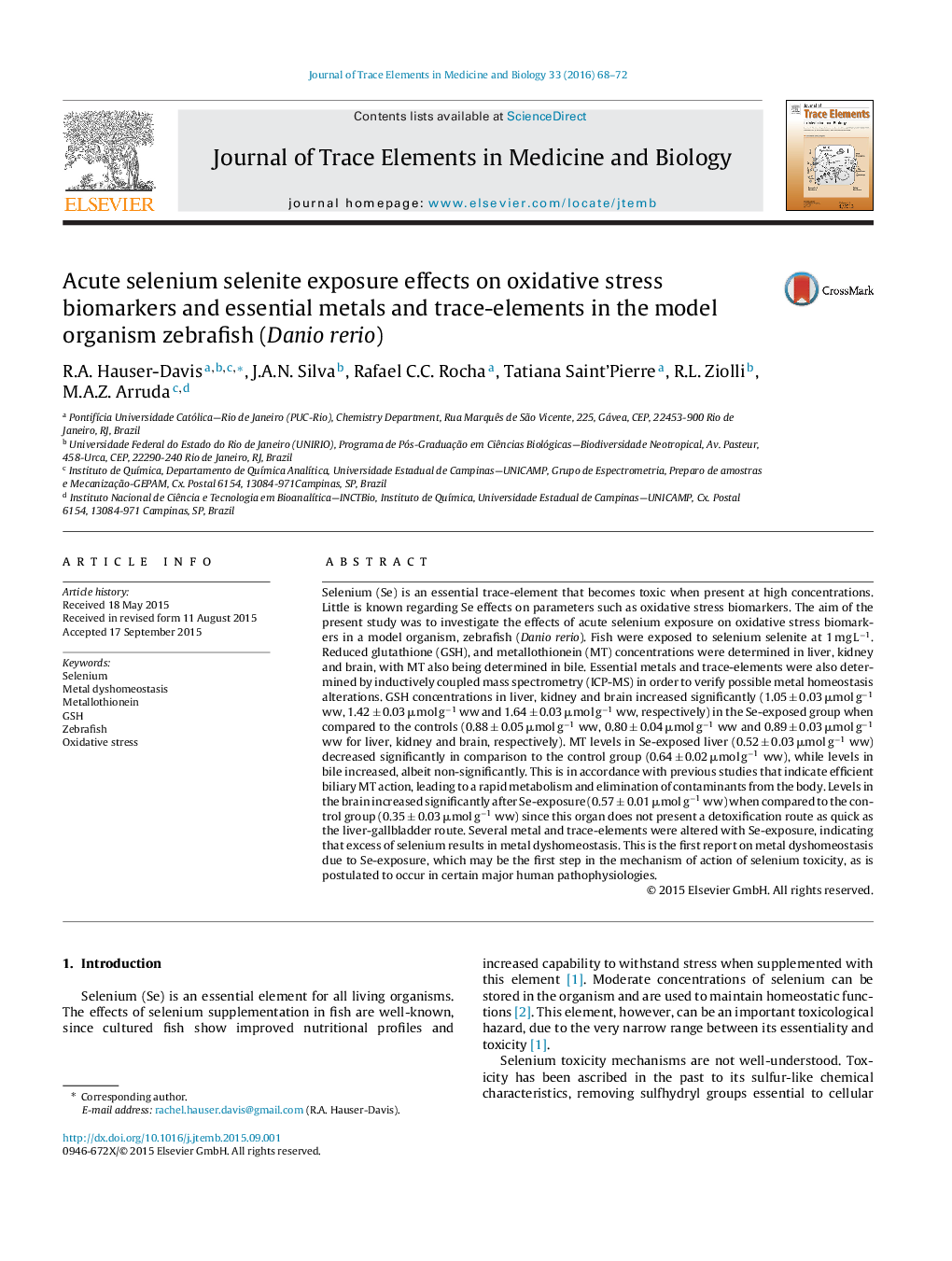| Article ID | Journal | Published Year | Pages | File Type |
|---|---|---|---|---|
| 1226442 | Journal of Trace Elements in Medicine and Biology | 2016 | 5 Pages |
•Oxidative stress biomarkers and metals in Se-exposed Zebrafish were investigated.•GSH concentrations in Se-exposed liver, kidney and brain increased significantly.•Metallothionein levels in Se-exposed liver decreased while biliary levels increased.•Metallothionein levels in the brain increased significantly after Se-exposure.•Metal dyshomeostasis occurred, which may be the first step in Se toxicity.
Selenium (Se) is an essential trace-element that becomes toxic when present at high concentrations. Little is known regarding Se effects on parameters such as oxidative stress biomarkers. The aim of the present study was to investigate the effects of acute selenium exposure on oxidative stress biomarkers in a model organism, zebrafish (Danio rerio). Fish were exposed to selenium selenite at 1 mg L−1. Reduced glutathione (GSH), and metallothionein (MT) concentrations were determined in liver, kidney and brain, with MT also being determined in bile. Essential metals and trace-elements were also determined by inductively coupled mass spectrometry (ICP-MS) in order to verify possible metal homeostasis alterations. GSH concentrations in liver, kidney and brain increased significantly (1.05 ± 0.03 μmol g−1 ww, 1.42 ± 0.03 μmol g−1 ww and 1.64 ± 0.03 μmol g−1 ww, respectively) in the Se-exposed group when compared to the controls (0.88 ± 0.05 μmol g−1 ww, 0.80 ± 0.04 μmol g−1 ww and 0.89 ± 0.03 μmol g−1 ww for liver, kidney and brain, respectively). MT levels in Se-exposed liver (0.52 ± 0.03 μmol g−1 ww) decreased significantly in comparison to the control group (0.64 ± 0.02 μmol g−1 ww), while levels in bile increased, albeit non-significantly. This is in accordance with previous studies that indicate efficient biliary MT action, leading to a rapid metabolism and elimination of contaminants from the body. Levels in the brain increased significantly after Se-exposure (0.57 ± 0.01 μmol g−1 ww) when compared to the control group (0.35 ± 0.03 μmol g−1 ww) since this organ does not present a detoxification route as quick as the liver-gallbladder route. Several metal and trace-elements were altered with Se-exposure, indicating that excess of selenium results in metal dyshomeostasis. This is the first report on metal dyshomeostasis due to Se-exposure, which may be the first step in the mechanism of action of selenium toxicity, as is postulated to occur in certain major human pathophysiologies.
